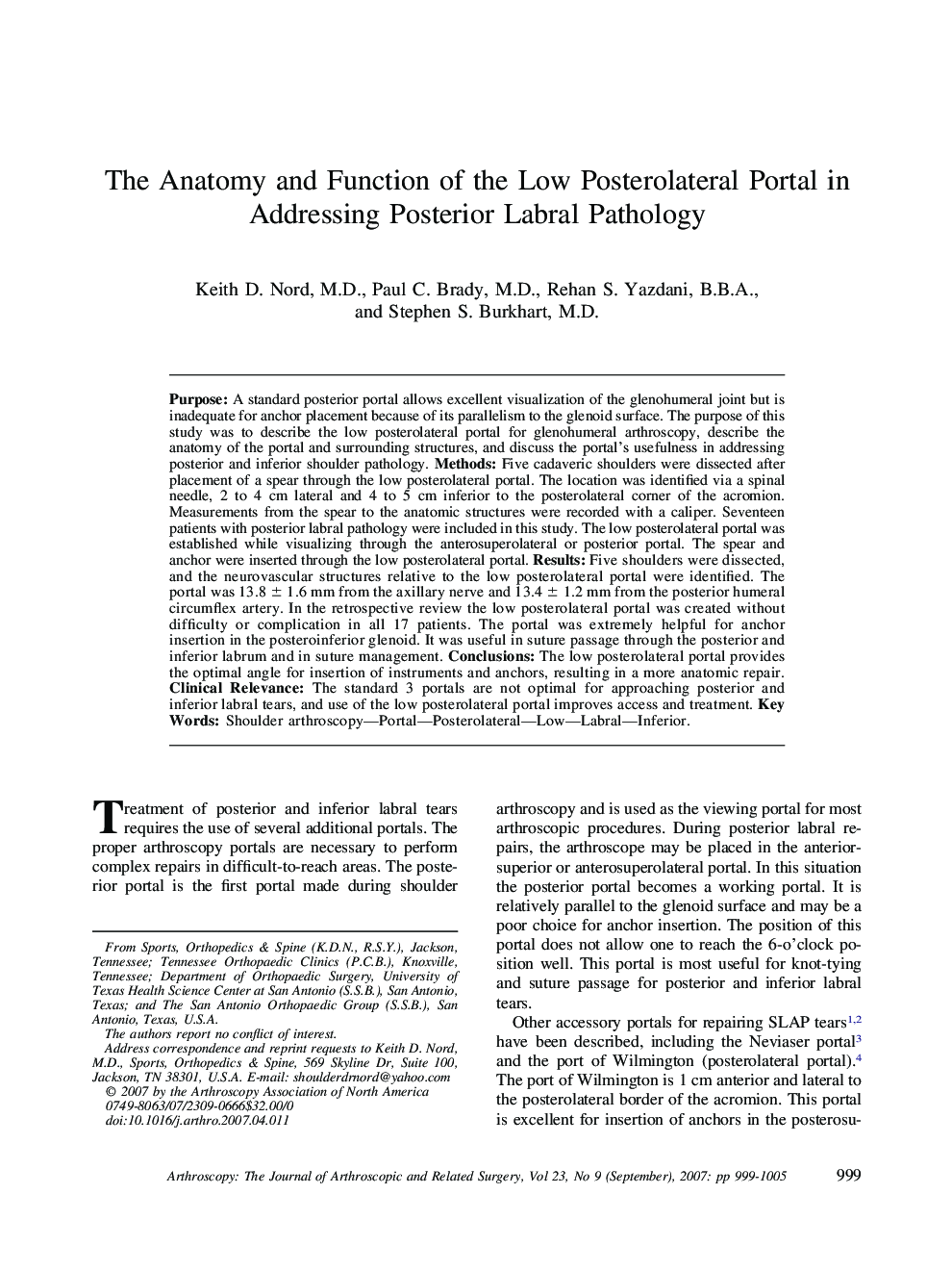| Article ID | Journal | Published Year | Pages | File Type |
|---|---|---|---|---|
| 4046646 | Arthroscopy: The Journal of Arthroscopic & Related Surgery | 2007 | 7 Pages |
Purpose: A standard posterior portal allows excellent visualization of the glenohumeral joint but is inadequate for anchor placement because of its parallelism to the glenoid surface. The purpose of this study was to describe the low posterolateral portal for glenohumeral arthroscopy, describe the anatomy of the portal and surrounding structures, and discuss the portal’s usefulness in addressing posterior and inferior shoulder pathology. Methods: Five cadaveric shoulders were dissected after placement of a spear through the low posterolateral portal. The location was identified via a spinal needle, 2 to 4 cm lateral and 4 to 5 cm inferior to the posterolateral corner of the acromion. Measurements from the spear to the anatomic structures were recorded with a caliper. Seventeen patients with posterior labral pathology were included in this study. The low posterolateral portal was established while visualizing through the anterosuperolateral or posterior portal. The spear and anchor were inserted through the low posterolateral portal. Results: Five shoulders were dissected, and the neurovascular structures relative to the low posterolateral portal were identified. The portal was 13.8 ± 1.6 mm from the axillary nerve and 13.4 ± 1.2 mm from the posterior humeral circumflex artery. In the retrospective review the low posterolateral portal was created without difficulty or complication in all 17 patients. The portal was extremely helpful for anchor insertion in the posteroinferior glenoid. It was useful in suture passage through the posterior and inferior labrum and in suture management. Conclusions: The low posterolateral portal provides the optimal angle for insertion of instruments and anchors, resulting in a more anatomic repair. Clinical Relevance: The standard 3 portals are not optimal for approaching posterior and inferior labral tears, and use of the low posterolateral portal improves access and treatment.
